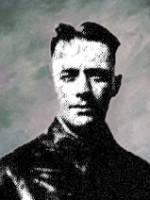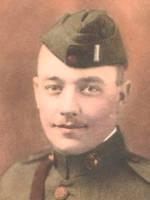

One hundred years ago a young fellow who would make aviation history was growing up in the Town of Alabama. This young man was Harmon J. Norton, a member of the Oakfield High School Class of 1913.
Harmon went on to become a lawyer by studying law at the Detroit College of Law. In 1914 he served as a clerk in the New York State Legislature and in 1915 as a clerk at the Constitutional Convention of New York State. At about the same time he became one of the pioneer flyers of the country. His military career began in 1916 and he was appointed to an officer position in the air branch of the United States Marine Corps in 1918.
Preceding his appointment and during World War I, 1st. Lt. Norton served as a flying instructor at various fields throughout the country. As an able and skilled aviator he won wide fame among his fellow officers and citizens, and earned an enviable position in air circles. Besides piloting planes, Lt. Norton was continuously called upon to represent defendants in court martial trials. His practice before court martial boards made him well known throughout the service, and many times he was called to different parts of the country to defend men faced with court martial proceedings.
In 1923 Lt. Norton was appointed to command the then newly established land airplane squadron at Pensacola, Florida. Captain J.J. Raby, USN Commandant at the time, described Lt. Norton as a pilot of long experience and sure ability especially in land planes, but his ability does not stop at flying as he is an exceptional all around officer and is particularly valuable to aviation.
Because of his flying fame Lt. Norton was selected to be the aviation liaison officer in the Marine Corps of the expeditionary forces. In this position Lt. Norton handled all matters which came up between the force and its flying section. He was selected for this position because he was an able and skilled aviator; one who could make short trips in quick time and manipulate safe landings on hazardous fields. Special attention was paid to Lt. Norton's long and brilliant record in aviation.
Lt. Norton, who had held several prominent posts in the air branch of the United States Marines and who was declared to be one of the best fliers in the country, died in 1926 when a Navy plane he was testing crashed into the Potomac River. He was buried at Arlington National Cemetery.
